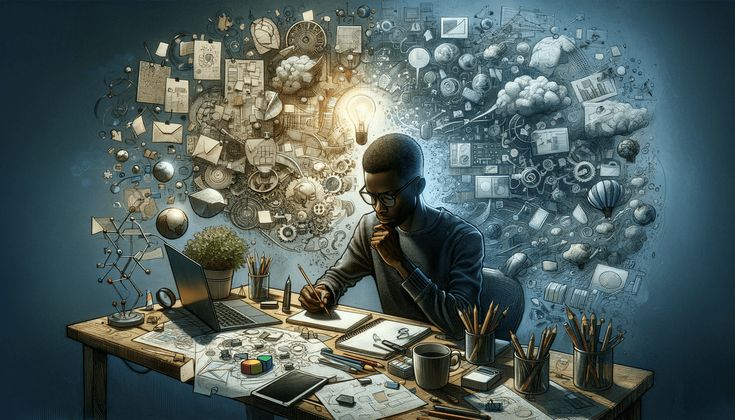Its time to move up the Value Chain

Navigating the Future of Work in the Age of AI and Digital Transformation
In today’s rapidly evolving business landscape, every individual is hired with the expectation of adding value to their organization. Traditionally, the concept of value creation within a company can be visualized as an inverted pyramid. At the bottom of this pyramid lie tactical, repetitive, and process-oriented tasks that have minimal impact on overall business results. As we ascend the pyramid, the roles become more strategic, creative, and decision-oriented, contributing significantly to the organization’s success.

However, the advent of Artificial Intelligence (AI) and digital transformation is reshaping this structure. Automation is increasingly handling tasks at the bottom of the value chain, rendering some roles obsolete. This shift necessitates that employees upskill and move up the value chain to remain relevant and retain their positions. Failure to adapt may result in job displacement.
The Inverted Pyramid of Value Creation
The inverted pyramid represents the hierarchy of value within an organization.
- Bottom Tier: Encompasses routine tasks such as data entry, basic customer service, and manual processing. These roles require minimal specialized skills and have limited impact on strategic outcomes.
- Middle Tier: Involves supervisory roles, advanced technical tasks, and specialized functions. Employees here contribute to efficiency and productivity improvements.
- Top Tier: Constitutes strategic leadership, innovation, and decision-making roles. Individuals at this level drive significant business growth and transformation.

Understanding one’s position within this pyramid is crucial for career development and aligning with organizational goals.
Impact of AI and Digital Transformation
AI and digital technologies are rapidly automating tasks, especially those that are repetitive and rule-based. According to a report by McKinsey Global Institute, by 2030, up to 375 million workers worldwide may need to switch occupational categories due to automation’s impact1. The World Economic Forum’s “Future of Jobs Report 2020” also highlights that automation and a new division of labor between humans and machines could disrupt 85 million jobs globally by 2025, while simultaneously creating 97 million new roles that are more adapted to the new division of labor.
Sectors Most Affected

- Manufacturing: Automation of assembly lines.
- Retail: Introduction of self-checkout systems.
- Finance: Algorithmic trading and automated customer service bots.
- Transportation: Emergence of autonomous vehicles.
- BPO/KPOs: Emergence of Robotic process automation
These changes underscore the urgency for workers in these sectors to acquire new skills.
The Need to Upskill and Reskill
To navigate this changing landscape, individuals must focus on upskilling (enhancing current skills) and reskilling (learning new skills). The OECD Skills Outlook 2019 emphasizes that lifelong learning is essential for workers to remain employable in the digital age.

- Digital Literacy: Proficiency with digital tools and platforms.
- Complex Problem-Solving: Ability to solve new and complex problems.
- Critical Thinking: Evaluating information critically to make decisions.
- Creativity: Innovating and thinking outside the box.
- Emotional Intelligence: Managing interpersonal relationships empathetically.
Organizational Initiatives
Companies are investing in employee development programs:
- Amazon announced a $700 million investment to upskill 100,000 U.S. employees by 2025.
- AT&T implemented a comprehensive reskilling program to retrain its workforce in new technologies.
Examples and Case Studies
Historical Transition: From Typewriters to Computers
In the late 20th century, clerks, stenographers, and typists who were accustomed to manual typewriters had to adapt to the advent of personal computers and office software. This transition was significant:
- Adaptation to PCs and Software: Workers learned to use personal computers, mastering software like Microsoft Office Suite, which included Word, Excel, and later, email clients like Outlook.
- Increased Productivity: The shift to digital tools allowed for faster typing, easy editing, and better document management, significantly increasing productivity.
- Career Advancement: Those who upskilled were able to move into roles like administrative assistants, data analysts, and office managers.
Example: Priscilla, a typist in the 1980s, learned to use word processors and spreadsheets, eventually becoming an executive assistant. Her digital skills made her indispensable, and she mentored others in her organization6.
Digital Adaptation in Developing Countries
In countries like India, individuals with limited formal education have quickly embraced digital technologies to stay relevant and improve their livelihoods.
Street Vendors and Small Retailers
- Digital Payments: Adoption of mobile payment platforms like Paytm and Google Pay has enabled vendors to accept cashless payments, increasing sales and customer convenience.
- Online Presence: Some have started using social media and messaging apps like WhatsApp Business to reach more customers.
Example: Ramesh Kumar, a fruit vendor in Delhi, started accepting digital payments after the 2016 demonetization in India. This not only retained his existing customer base but also attracted tech-savvy customers who preferred cashless transactions7.
Taxi and Auto-Rickshaw Drivers
- Ride-Hailing Apps: Drivers have partnered with platforms like Uber and Ola, using smartphones and GPS technology to find customers more efficiently.
- Improved Earnings: Access to a larger customer base and dynamic pricing models have increased their earnings.
Example: Anita Singh, an auto-rickshaw driver in Mumbai, joined Ola and learned to use GPS navigation. Her daily earnings increased by 30%, and she received benefits like insurance through the platform8.
Craftsmen and Service Providers
- Online Marketplaces: Artisans and craftsmen are selling products on platforms like Etsy and Amazon Handmade, reaching global markets.
- Skill Development: Organizations and NGOs are providing digital literacy training to help these individuals market their skills online.
Example: Kamala Devi, a weaver from a rural area, learned to list her handmade textiles online. With increased visibility, her income doubled, and she now employs others in her community.
Tradespeople: Carpenters and Electricians
- Service Platforms: Professionals are registering on platforms like UrbanClap (now Urban Company) to offer services, using apps to manage bookings and customer interactions.
- Customer Trust: Digital profiles with reviews and ratings have helped build trust, leading to more job opportunities.
Example: Rahul Verma, an electrician, joined Urban Company and saw a 50% increase in job requests. The platform’s training programs also helped him improve customer service skills.
Individual Transformation
- Digital Literacy Programs: Government initiatives like Digital India aim to make one person in every household digitally literate11.
- Mobile Penetration: Affordable smartphones and data plans have made technology accessible, even in remote areas.
- Empowerment: Digital skills have empowered individuals, leading to financial inclusion and improved quality of life.
The integration of AI and digital technologies is inevitable and is transforming the nature of work across the globe. Historical examples show that those who adapt and upskill can not only retain their jobs but also enhance their careers and livelihoods. The rapid digital adaptation in countries like India demonstrates that education level is not a barrier to embracing technology.
Employees must proactively move up the value chain by acquiring new skills and embracing lifelong learning. This not only secures individual career paths but also drives innovation and growth within organizations. By understanding the changing dynamics and acting accordingly, both employees and employers can thrive in the new digital era.






Responses